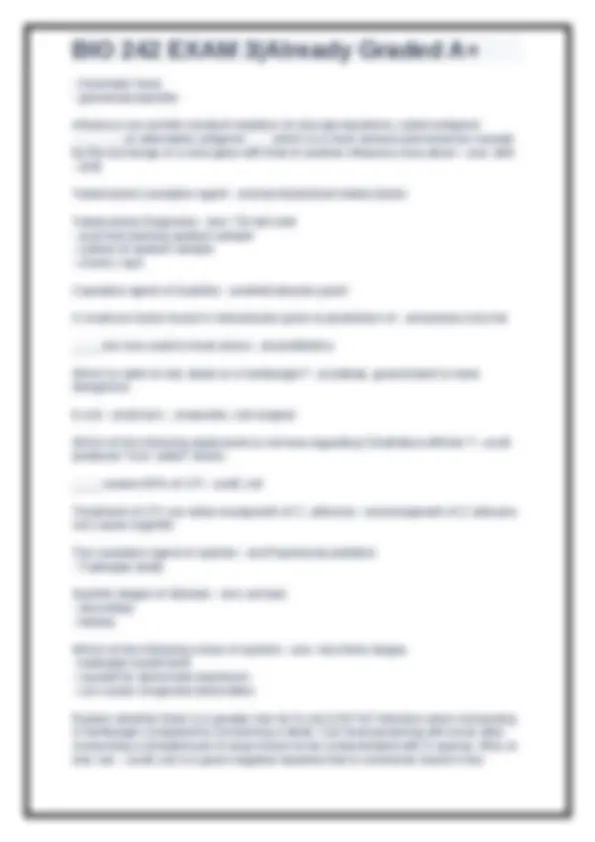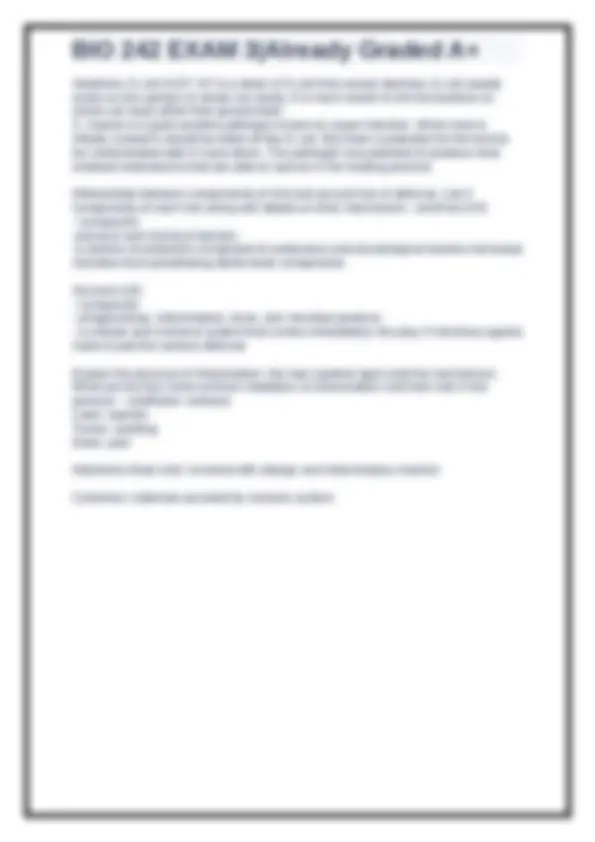




Study with the several resources on Docsity

Earn points by helping other students or get them with a premium plan


Prepare for your exams
Study with the several resources on Docsity

Earn points to download
Earn points by helping other students or get them with a premium plan
Community
Ask the community for help and clear up your study doubts
Discover the best universities in your country according to Docsity users
Free resources
Download our free guides on studying techniques, anxiety management strategies, and thesis advice from Docsity tutors
A comprehensive overview of the human immune system's defense mechanisms against foreign invaders, including the first and second lines of defense, as well as the specific and memory-based third line of defense. It delves into the components and mechanisms of each line of defense, such as physical and chemical barriers, phagocytosis, inflammation, and the roles of different immune cells and antibodies. The document also covers various infectious diseases, their causative agents, symptoms, and complications, including bacterial infections like staphylococcus aureus, streptococcus pyogenes, and e. Coli, as well as viral infections like influenza and hiv. It discusses diagnostic methods, treatment approaches, and the importance of understanding these infectious diseases for maintaining good health.
Typology: Exams
1 / 4

This page cannot be seen from the preview
Don't miss anything!



Which lines of defense would be considered nonspecific? - ansFirst line of defense Second line of defense Differentiate between components of first and second line defense - ansFIRST:Physical and Chemical barriers SECOND: phagocytosis, inflammation, fever, antimicrobial proteins FLOD: lysozome - ansis secreted in tears in saliva What human body region is protected by fatty acids, acidic pH, lactic acid, and tough cell barrier with its own normal biota? - ansskin The sweat doud on skin and saliva in the mouth attributed to what line of defense? - ansFirst line Eosinophils - ansattack parasitic helminths Basophils - ans- make up less than .5% of circulating WBCs
IgA - ansdimer IgM - anspentamer Example of natural active immunity - anschicken pox infection, followed by lifelong immunity Example of natural passive immunity - ansbreastfeeding or an antitoxin because the body receives fully formed immunoglobulins and will not result in memory In HIV infection - ansCD4 T- helper cells are attacked, disruption of cell mediated immunity Tetanus differs from botulism in that - ansmuscles cannot relax in tetanus, while muscles cannot contract in botulism. Botulism caused by an - ans-exotoxin
intestines. E.coli O157: H7 is a strain of E.coli that causes diarrhea. E.coli usually exists on the surface of whole cut meats, it is much easier to kill this bacteria on whole cut meat rather than ground beef. S. Aureus is a gram positive pathogen known to cause infection. When food is initially cooked it should be killed off like E.coli. But there is potential for the food to be contaminated after it cools down. The pathogen has potential to produce heat resistant enterotoxins that are able to survive in the heating process Differentiate between components of first and second line of defense. List 3 components of each line along with details on their mechanism - ansFirst LOD